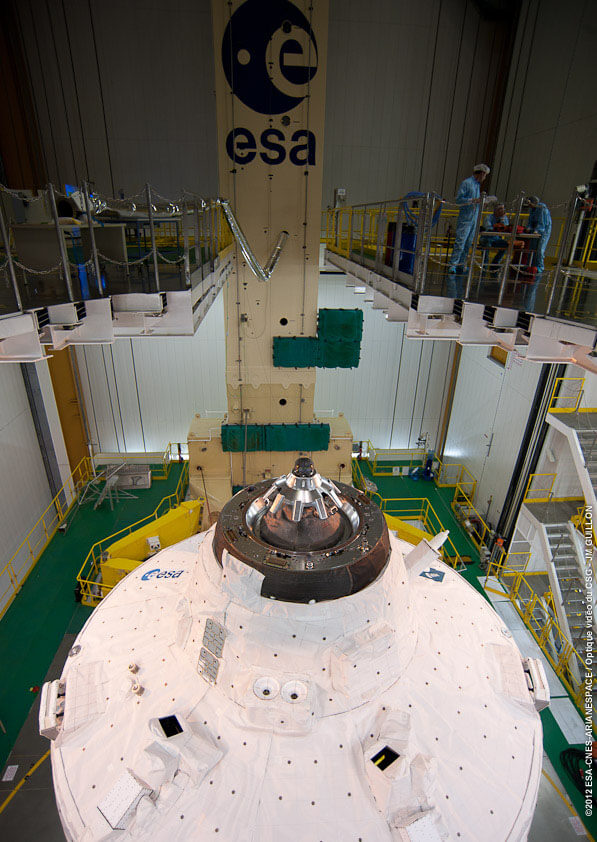The spacecraft, Eduardo Amaldi, was launched from the European Space Center in Kourou, French Guiana on Friday and will arrive at the space station almost a week later, built and launched in less than a year

The supply vehicle (ATV) Eduardo Ameldi was launched from the European Space Center in Coro in French Guiana on Friday at 07:34 Israel time aboard the Ariane 5 launcher, operated by the private company Ariane Espas and is making its way to the space station.
The Automated Supply Transfer Vehicle, the most complex spacecraft built in Europe, is bringing vital supplies to the space station, and its engine will also be used to lift the space station into a higher orbit. She will continue to dock at the space station for about five months.
Eduardo Amaldi is the third spacecraft in a series of five resupply spacecraft developed by Europe to fulfill its financial commitment to the station. This is the first spacecraft whose entire manufacturing and launch process took one year, as required by the agreements signed by the agency.
"An annual service to the station by Europe has become feasible thanks to the dedication, capacity and mutual relationship in our space industry, national agencies and the European Space Agency" says Jean-Jacques Durdain, Director General of ESA. adding that ATV-3 demonstrates Europe's ability to launch complex but regular missions to support the operation of the space station in coordination with our international partners."
"We are proud that the European Space Agency provides the most sophisticated tools to the space station," said the German astronaut Thomas Reiter, currently the director of manned flights at the European Space Agency. Reiter hinted that the experience learned could be used in the construction of manned spacecraft when he said that the experience gained in the space industry thanks to the ATV vehicles will be used for additional space missions (exploration space mission - a word that is used more and more today to describe manned flights).
The launcher weighing 20 tons took off east towards the Azores and Europe. The first eight minutes brought it to a low orbit with an inclination of 51.6 degrees compared to the equator. After 42 minutes, the upper stage was ignited in order to circle the orbit at an altitude of 260 kilometers. About 64 minutes after launch, the spacecraft separated from the upper stage. 25 minutes later the spacecraft deployed its solar wings, thus ending the launch phase.
Eduardo Amaldi is now performing a series of maneuvers in order to meet the space station on March 28 at 22:34 GMT (00:34 Israel time and European time in the few days between the change of daylight saving time there and there). She is supposed to anchor on her own in the Russian Zvezda component. During the cruise phase, the spacecraft is monitored by the ATV control center in cooperation with the space station control centers in Houston and Moscow. The control center of the ATV is located in Toulouse, France at the facility of the French space agency CNES.
